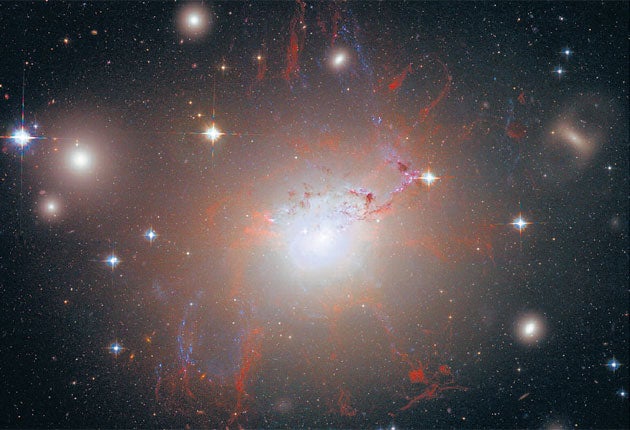David Randall: Phone masts may harm earth's trees, but calls from ET look more likely
Four corners of the world

Do your local trees look a bit peaky? Are there cracks in the bark, with parts of the leaves dying? The blame, according to Dutch research, is radiation from mobile phone networks and Wi-Fi. Ecologists in the city of Alphen aan den Rijn found abnormalities on trees that could not be accounted for by any known disease or fungus. So experts at Wageningen University were called in, and they subjected 20 ash trees to various kinds of radiation for three months. Sure enough, those exposed to Wi-Fi signals showed symptoms of radiation sickness.
What's really worrying is that five years ago, only about 10 per cent of urban trees in Holland suffered from radiation poisoning. Today, 70 per cent of them do. And, if radiation from such networks can harm a 40ft tree, what might it be doing to small animals, birds and insects? On a well-ordered planet, further research would be undertaken, results published and relevant action taken. But here, you know what will happen: research funded by telecoms firms will challenge or muddy the findings, governments will declare the science "inconclusive", we'll all go on using mobiles and Wi-Fi and get used to sick-looking trees, and a marked lack of small urban birds.
The only consolation I can offer to tree lovers is this news from Brazil: satellite images have shown that the rate of deforestation in the Brazilian Amazon is at its lowest for 22 years. Some 2,490 square miles were cleared last year – less than a quarter of that felled in 2004. Thank heaven there aren't many phone masts in the rainforest.
* The mystery of the week is undoubtedly what a retired French electrician called Pierre Le Guennec is doing with £54m-worth of Picassos. He says he was given them by the artist, or his wife (his tale varies), back in the 1970s, not long before old Pablo went off to the great studio in the sky. He then kept them in a box in his garage, as you tend to do with multimillion-pound art stashes.
Scepticism abounds, with some suggesting the works may not be genuine, others that Pierre purloined them while fitting an alarm system to the great man's villa. What no one has yet suggested is the more obvious explanation for how an electrician acquires goodies: "I know the quote looks steep, Mr Picasso, but you won't find a better price around Mougins." A day later: "It's not looking good, Pablo. That ground floor ring looks dodgy. It's gotta be replaced." A week of disruption and power outages later: "I know it's more than I said, but there's the new junction box, extra cabling, that socket in the bedroom your wife wanted, the rewiring in your den..." It would have been worth a few old sketches just to get rid of him.
* The upcoming auction of the coffin of President Kennedy's assassin, Lee Harvey Oswald, has generated disappointingly little by way of conspiracy theories. Where are the online postings from wackos around the world claiming that: a) this is not his coffin; b) it can't be because he's not dead; c) he's really living in Bolivia; d) the position of Oswald's casket indicates that there must have been at least three other coffins; f) there is no e) because the government covered it up; and g) the coffin's size makes it almost certain it is not Oswald's but Patrolman Tippet's?
* Finally, news from outer space. A study led by an astronomer at Yale University has concluded that we have been seriously underestimating the number of stars in the universe. There are actually some 300,000,000,000,000,000,000,000, it calculates. The number is a suspiciously round one, but the chances of life being found elsewhere do seem to have been rather increased.

Join our commenting forum
Join thought-provoking conversations, follow other Independent readers and see their replies